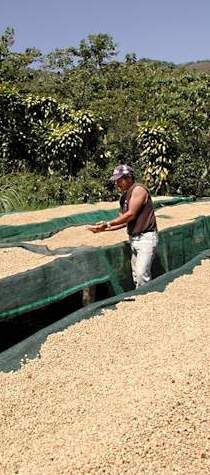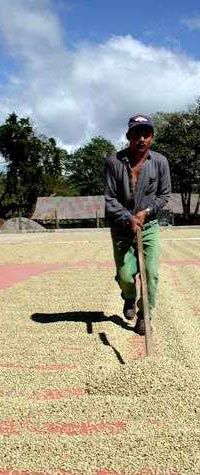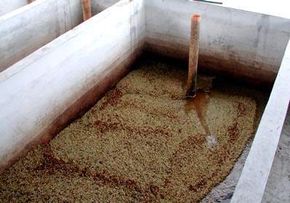Processing Cherries
Right after picking, it's time for processing. This is done in one of two ways:
- Dry method - By the simplest and cheapest method, the harvested cherries are spread out to dry in sunlight. They are periodically raked and turned for seven to 10 days, until their moisture content has fallen to 11 percent. The outer shell of the cherries turns brown and the beans rattle around inside.
- Wet method - The main difference between the wet and dry method is that in the wet method, the pulp of the coffee cherry is removed from the beans within 24 hours of harvesting. A pulping machine washes away the skin and pulp. The beans are put in fermentation tanks for 12 to 48 hours. Natural enzymes loosen the slimy parenchyma from the parchment covering. The beans are then dried, either by the sun or by mechanical dryers.


Once the beans are dried, all of the layers are removed from the beans (this process is called hulling). Occasionally, beans may be polished in a machine designed to remove that last little bit of silver skin. Beans are then graded and sorted, first by size, then by density. Beans are either sorted by hand as they pass by on a conveyer belt or by an air jet that separates lighter (inferior) beans from heavier ones.
Advertisement
Coffee is shipped unroasted. This is called green coffee. It is stored in bags made of jute or sisal, or shipped in huge plastic-lined freight containers. About 7-million tons of green coffee are shipped worldwide each year.
